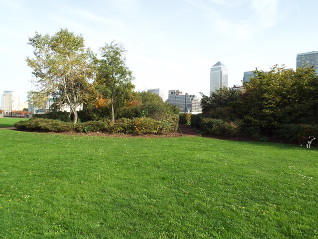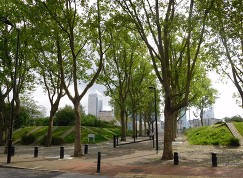





Exploring Southwark and discovering its history


Durand's Wharf
In February 1804, Durand’s Wharf was the finishing line for a rowing race held between a team of watermen from London and a team of watermen from Gravesend. Rowing in cutters, the race commenced in Gravesend and, eight hours and 82 miles later, the watermen from Gravesend reached Durand’s Wharf. The London team took defeat hard and in compensation, Capt Durand and Major Barrington proposed a further race between four members of the London team who, rowing in pairs, would compete for an “excellent” wherry.
The race started at Durand’s Wharf, proceeded to Woolwich where the crews turned round to return to the end at Durand’s Wharf. Major Barrington was stationed at the turning point in Woolwich while Capt. Durand followed the rowers in his sailing boat. The race was thrilling: one crew, Bromwell and Wood, took an early lead against Shepherd and Howell and had doubled their lead by the time they reached the boat moored at Woolwich which they were to row around to return to Durand’s Wharf. But gradually, with great skill and strength, Shepherd and Howell fought back to gain the lead which they had increased by the time they returned to Durand's Wharf. Eighty eight minutes and 13 miles since the race started, Shepherd and Howell were led onto their prize wherry. The race was a grand occasion with many spectators in their boats on the river and the day did not end without some spectators coming to blows.
Timber was one of the main goods handled in the Surrey Commercial Docks and for many years Durand’s Wharf was a timber yard. Burton Bolton and Haywood took over the wharf in the latter half of the 19th century and some sources show the yard called Burt’s Wharf. The company was started by two railway engineers in 1848 who became specialists in timber preservation. They manufactured railway sleepers using timber arriving at the nearby Docks. The company grew larger, establishing other branches, and diversified into chemicals including the manufacture of tar and creosote. The company is now based in Newport, Wales and focusses on timber preservation.
The wharf closed some time in the 1970s as a result of the docks closing. The site was cleared and the open space created but it was not to remain a peaceful open space for long. Work commenced on the extension to the Jubilee Line in the early 1990s to accommodate the newly regenerated docklands on the north bank, in particularly the emerging Canary Wharf. Part of the route of the new line ran from Canada Water station to Canary Wharf station and runs right underneath Durand’s Wharf. The park became a work station where excavated spoil from the newly dug tunnels was brought up to the surface and then disposed of by barges along the river. During the work, it was discovered that creosote tanks had been left on site and just boarded over. Some of these still contained creosote which had leaked out and the area required remedial work, delaying the project by three to four weeks. A permanent ventilation and escape shaft to service the Jubilee Line Extension was constructed on the park, reducing the park’s size by about 20 square metres. The area was reinstated as a park in 1998.

Durand’s Wharf is a small, peaceful riverside park overlooked by Canary Wharf on the other side of the river Thames. Named after a wharf that was previously on the site since at least the beginning of the 19th century, the park is bordered by the Thames Path and has a small avenue of trees. It has not always been so peaceful.
There are proposals to build a much-needed bridge, called at present the Brunel Bridge, to carry pedestrians and cyclists from Rotherhithe to Canary Wharf. One of the proposed routes starts in Durand’s Wharf. At present, the new bridge is at the feasibility study stage.

Web discoveries
- UK Casino Not On Gamstop
- UK Casino Not On Gamstop
- Non Gamstop Casino
- Casinos Not On Gamstop
- Non Gamstop Casinos
- Non Gamstop Casinos
- Non Gamstop Casino
- Casino Sites Not On Gamstop
- Slots Not On Gamstop
- Casinos Not On Gamstop
- UK Betting Sites Not On Gamstop
- UK Casino Not On Gamstop
- Best Non Gamstop Casinos
- Betting Sites
- Non Gamstop Casino Sites UK
- Best Non Gamstop Casinos
- Non Gamstop Casino
- Casinos Not On Gamstop
- Non Gamstop Casino Sites UK